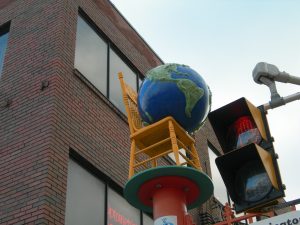 The symbol of Kensington Market, where the local and the global meet. Diversity is represented by stores’ owners who translated their ethnicities in terms of what is local and unique. An image that communicates what the paradox of globalization is all about.
The symbol of Kensington Market, where the local and the global meet. Diversity is represented by stores’ owners who translated their ethnicities in terms of what is local and unique. An image that communicates what the paradox of globalization is all about.
Slow Living movement reinforces that there is a latent desire for time, quality time, time for the family and interests other than efficient, purely productive tasks. The reference to measure quality then shifts from productivity to conviviality, pleasure, and tastes. The longing for a lifestyle that defines post-modernity in very specific ways.
A critique on the consumer culture that comes from those who not only have the means to consume but who are also aware of how desire is open to manipulation. In a circle that never ends, it is enough to fulfill one desire to move to the next one as it is dictated by insatiability of our human condition. Small scale acts of dissent, turning “time” into the object of desire. A desire that equals to the ideal of freedom (Parkins: 91). Freedom to be engaged in the working force but also partially withdrawn from it; freedom to be able to negotiate these daily temporalities taking into account familial responsibilities and working practices. Consumption practices that determine simultaneously individual’s identity as well as her/his relationship with the environment (Parkins: 132). Everyday temporalities are anchored into particular spaces, geographic locations that are exposed to global influences: inclusive versus exclusive spaces From this encounter between the local and the global communities move forwarded to build their particular interactions.
